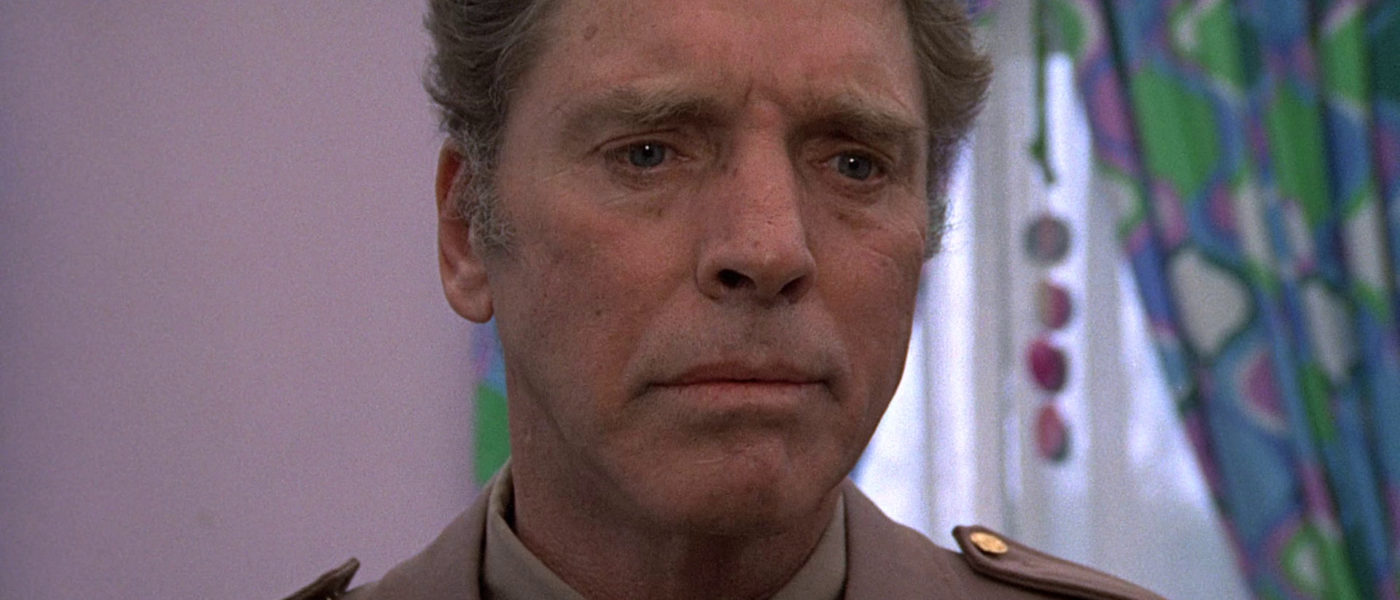Burt At Dawn And Dusk
DESERT FURY (1947)/DIRECTED BY LEWIS ALLEN
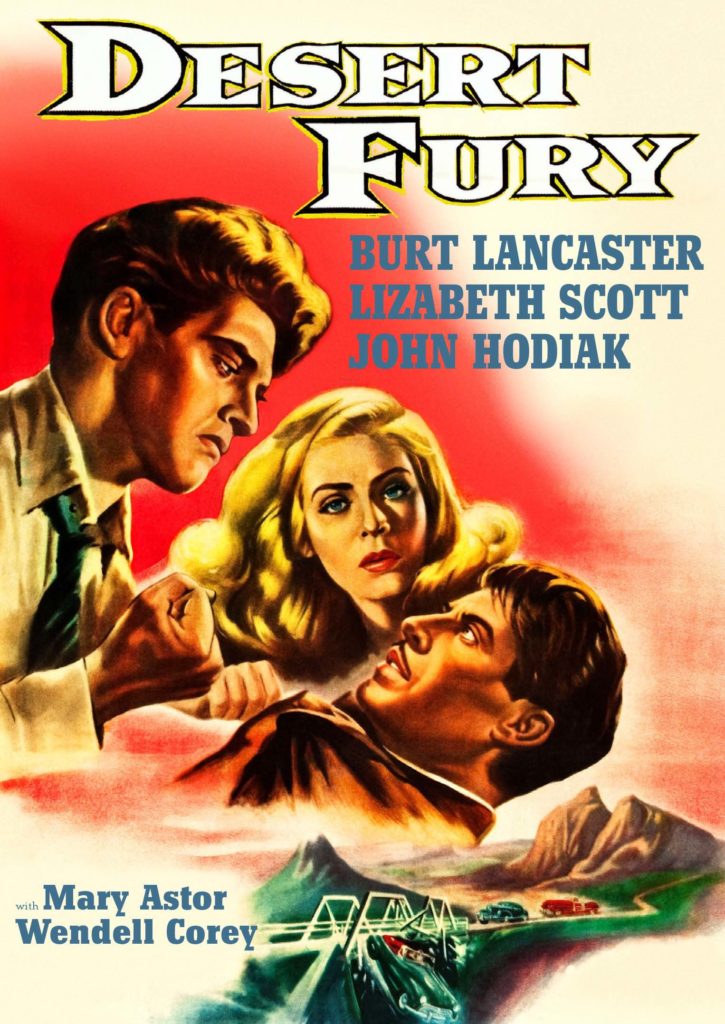
THE MIDNIGHT MAN (1974)/DIRECTED BY ROLAND KIBBEE AND BURT LANCASTER
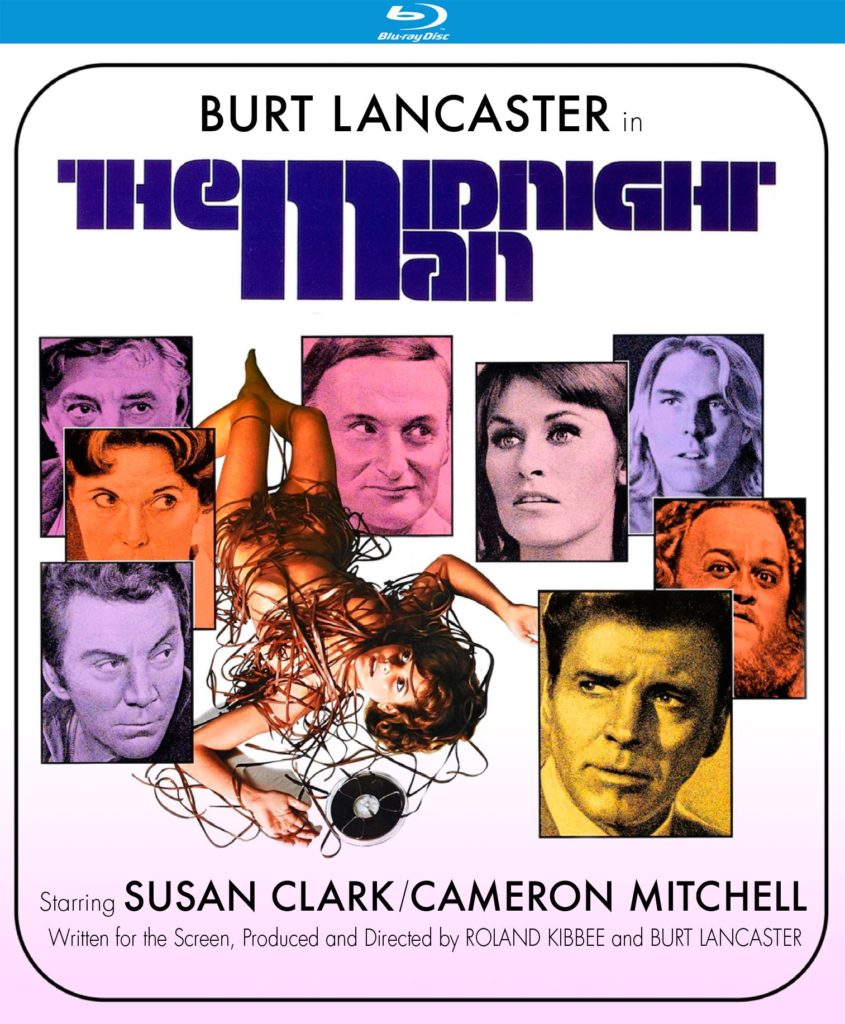
STREET DATES: February 19 and 26, 2019/KINO LORBER STUDIO CLASSICS
Kino Lorber once again gives this reviewer a favorite reviewing opportunity in the latter half of February: to compare a youthful role of a film actor with a role from much later years. Transposing “4” and “7”, Burt Lancaster exudes force and formidability across 26 years, the broad-shouldered and barrel-chested star maturing in the midcentury years from postwar tough guy to Vietnam and Watergate era loner. Desert Fury, from 1947, and Lancaster’s second (co-)directed feature The Midnight Man, from 1974, offer a dawn-to-dusk view of a screen mainstay who embodied strong masculinity and firm control over a screen career that would span 45 years. Like echoes across time, the younger romantic highway cop and the aging, disgraced cop-turned-sleuth have much to say to each other at opposite sides of the night-filtered day.
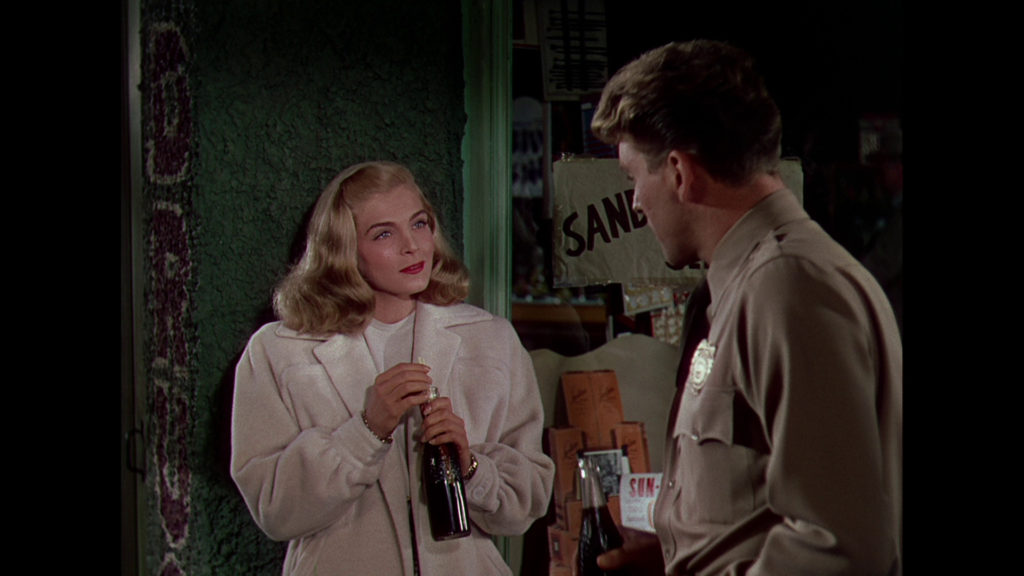
Desert Fury, Lancaster’s third feature, following his breakthrough roles for producer Mark Hellinger in The Killers (1946) and Brute Force (1947), casts him as a screen-billed second, a poster-billed third, yet a trailer-billed first opposite feature leads Lizabeth Scott and John Hodiak. Co-starring Mary Astor and “introducing” Wendell Corey — the trio of Scott, Corey, and Lancaster would be reunited for the year’s later I Walk Alone (1947) — this Technicolor melodrama represents the property that initially brought Lancaster to Hollywood: the Broadway actor’s first contract role for independent producer Hal B. Wallis who, as Imogen Sara Smith’s commentary for Kino Lorber’s Blu-ray informs us, had ordered test footage of the quickly rising star enacting scenes from Desert Fury before the actor made his first features. Little seen since the 1940’s and 50’s, and long delayed on home video, this sunbaked scorcher can now be fully appreciated for its arid desert view of overheated passion and lurid desire.
A pair of shady gamblers (Hodiak, Corey) drive into remote, desert-bordered Chuckawalla, Nevada — presumably on the highway between gambling meccas Reno and Las Vegas — where they become embroiled in illicit smalltown business and pleasure between powerful vice queen Fritzie Haller (Astor) and her beautiful young daughter, Paula (Scott). Paula’s onetime suitor, rodeo rider-turned-highway patrolman Tom Hanson (Lancaster), watches warily as the flashier of the two, Eddie Bendix (Hodiak), who years before had been held under suspicion for a road accident off a bridge leading out of town that killed his wife, romances the daughter while ignoring the warnings of her strong-willed mother. As the past threatens to intrude tragically upon the present, and as revelations of former events and associations color future ones, the menacing figure of Johnny Ryan (Corey) also watches and waits, showing a peculiar yet persistent hold on his long-time partner-in-crime Bendix.
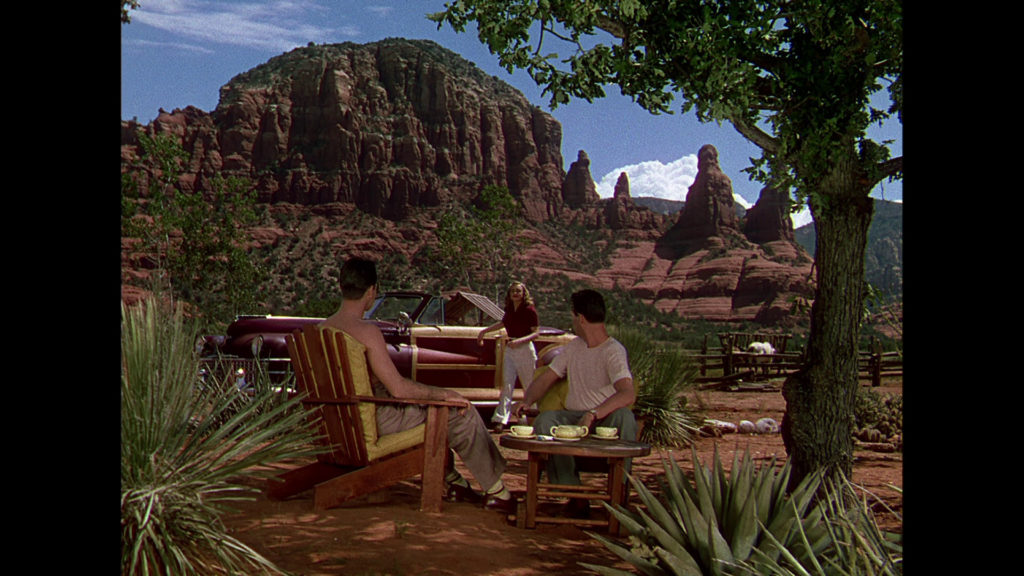
Seeming to invite a kinkier reading of these bare elements with each beige-walled, luxury sedan pursuit across the desert highway, the sleek-lined roadsters find equally complicated expression in lavishly-furnished interiors. The script credited to Robert Rossen (with an uncredited assist from A.I. Bezzirides) crackles with unusual intensity and unspoken depths, as if daring a seamier interpretation of story elements and character relationships through a combination of multi-layered dialogue, shaded performance styles, and unmistakable visual flourishes. Finally, the all-too-cool playing of Lizabeth Scott and Wendell Corey (which commentator Smith memorably terms “dreamwalking”) in contrast to the fiery performance of John Hodiak, and, even more memorably, to another assuredly acidic turn from genre trend-setter Mary Astor, may all seem to overshadow that of Burt Lancaster’s, whose role was expanded in adapting Ramona Stewart’s source novel. But his even-then firm characterization, while fulfilling the off-romantic role of the also-ran, is never less than measured and controlled in scenes he shares with the more apparently dynamic Hodiak and Astor, or the more seemingly spirit-gliding Corey and Scott.
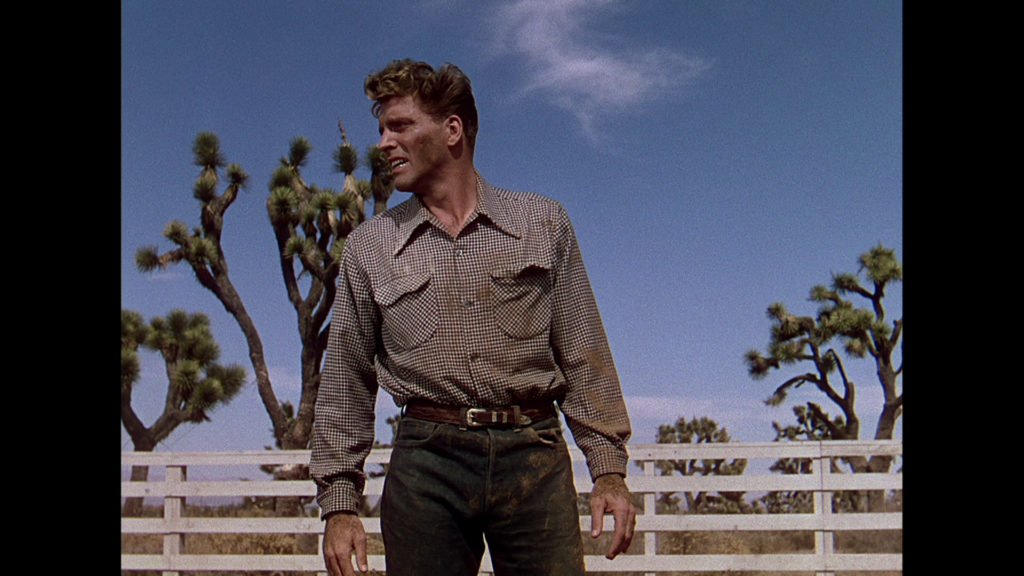
Justifiably slapping a belt of liquid into loose-cannon Hodiak’s face, in contrast to Hodiak’s later and sadistic pour of hot coffee down the back of an unoffending trucker, or firmly rebuffing Astor’s patronizing (or rather, matronizing) offer of a down payment on a ranch, in contrast to her earlier and more imperious handling of the local judge; Lancaster’s straight-arrow role is none-the-flashier for its down-to-earth qualities toward these various over-the-moon characters. But like his demonstrated rough ride of an unbroken colt in one early scene, and despite the career-ending injuries his character sustained, the ramrod Tom Hanson will eventually ride (or more accurately, drive) these undermining and untoward elements down. The story-glue that holds this dangerous desert drama together, Desert Fury gives Lancaster an early opportunity to demonstrate a genuine character solidity that can directly influence a threatened community for the better.
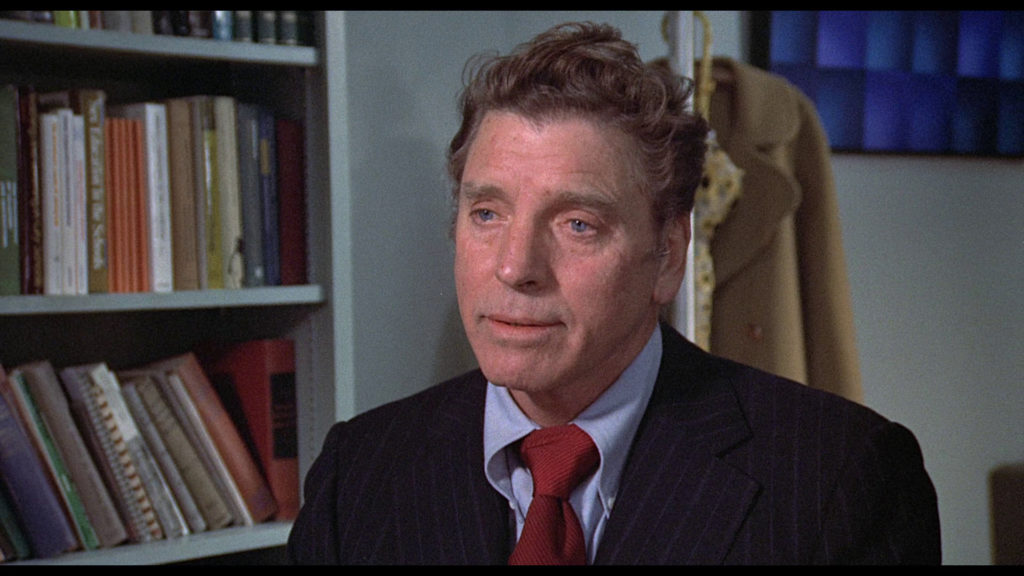
The Midnight Man, co-directed by Lancaster with screenwriter Roland Kibbee — whose association with the actor goes back to scripts written for Lancaster’s starring roles in The Crimson Pirate (1952) and Vera Cruz (1954) through The Devil’s Disciple (1959) and Valdez is Coming (1971) — updates the type of strong-armed yet past-haunted roles that made the actor a film noir star in the mid-to-late 1940’s. A gothic-tinged, Southern-set murder mystery with a full roster of recognizable character actors who are not what they initially seem, Lancaster authoritatively dreamwalks his own way through increasingly sordid layers of deepening revelations and truly shocking plot reversals. Like the title, the sunup-to-sundown milieu of aging security guard Jim Slade strongly complements earlier Lancaster roles such as Swede Anderson (The Killers), Frankie Madison (I Walk Alone), and Steve Thompson (Criss Cross [1947]); here displaced by time, geography, and shifting cultural currents.
Supporting great Cameron Mitchell’s brave yet foolhardy advance on a backwoods trio of stocking-masked thieves holding up a nightclub, which results in a broken leg for the security guard’s trouble, opens a nightwatch job at the local college for his former Chicago cop pal Jim Slade (Lancaster). Reporting to his sympathetic female parole officer (Susan Clark) weekly, Slade’s third-shift security gig, along with his old buddy’s sponsorship, offers the past middle-age, onetime police detective a quiet, afterhours way to spend the dawn of his twilight years. However, day-to-night matters are not as they first appear in this sleepy-seeming Southern college town, and the theft of a cassette tape containing a co-ed’s recorded psychiatric session, who turns out to be the daughter (Catherine Bach) of a US Congressman (Morgan Woodward), anticipates the traumatized young woman’s later, brutal murder. From a pornography-addled Bible-thumper (Charles Tyner) to a fey female-nude portraitist (Peter Dane), the false leads and falser personalities Slade encounters — all while, as an ex-con, diverting the suspicions of local law enforcement represented by the town sheriff (Ed Lauter) — threaten to unravel the darkly-wound fabric of a corrupt community to the light of day.
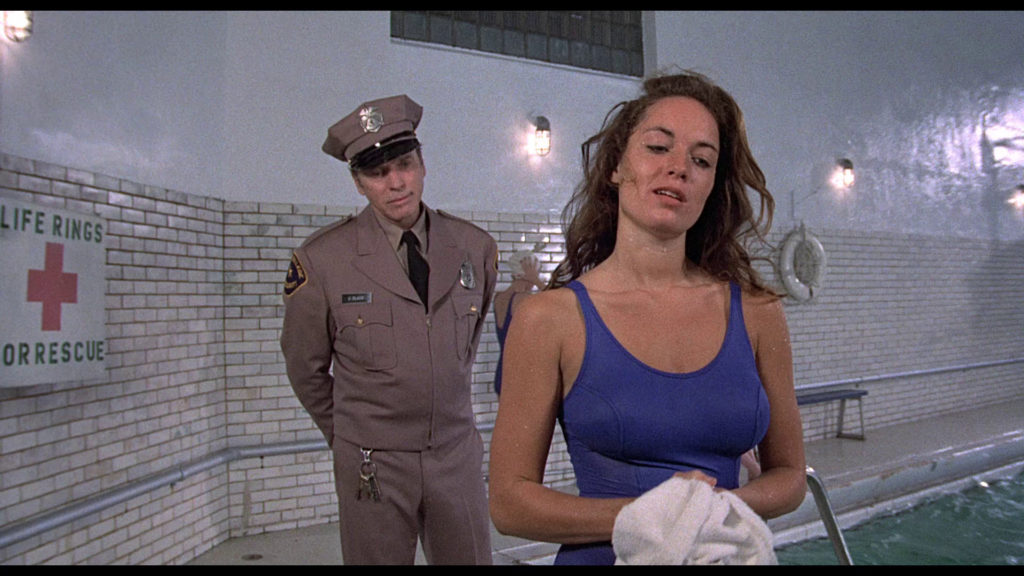
Kino Lorber commentators Howard S. Berger and Nathaniel Thompson’s reaching yet persuasive comparison to the David Lynch and Mark Frost TV series Twin Peaks (1990-’91, 2017 – ?) posits Lancaster’s starring and co-directed feature as an early dramatic rendering of a murdered town beauty revealing the sins of an entire community; where the detective figure doesn’t so much solve a murder as expose the dark heart at the beating center of a terrifying mystery. Careworn, heavier, his mottled complexion roughened and weathered by the weight of years, Lancaster at the outset of his seventh decade, and fourth in film, hearkens back to the hard-edged roles of his star-making youth while deconstructing his character’s violent past. Neither as well known nor as celebrated as a later role critiquing his own tough guy image, in Lancaster’s Oscar-nominated performance for Louis Malle’s 1980 Atlantic City, the actor’s much-lauded gravitas serves to expiate the crimes of the past while once again righting a “wrong” (and wronged) community.
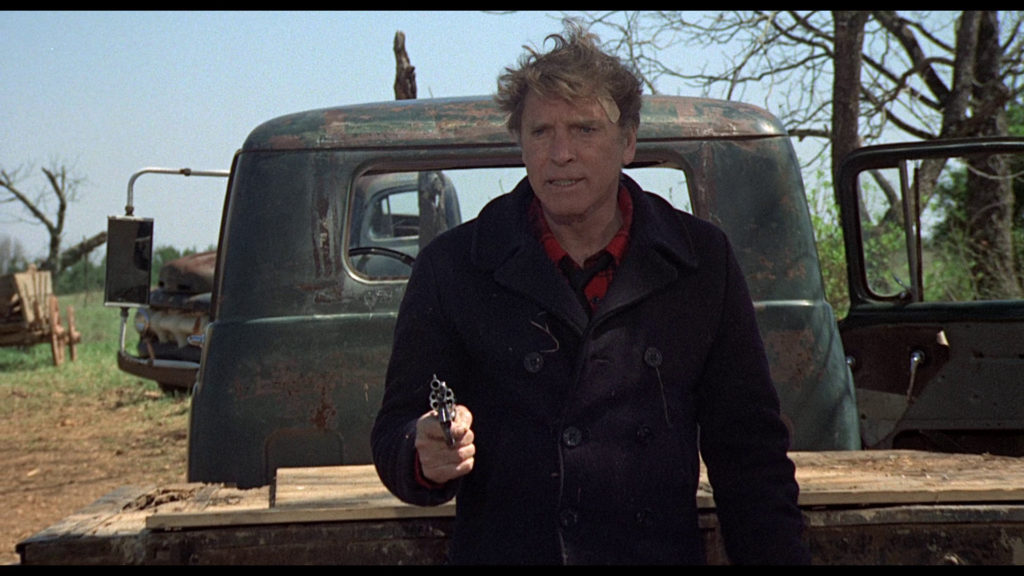
…
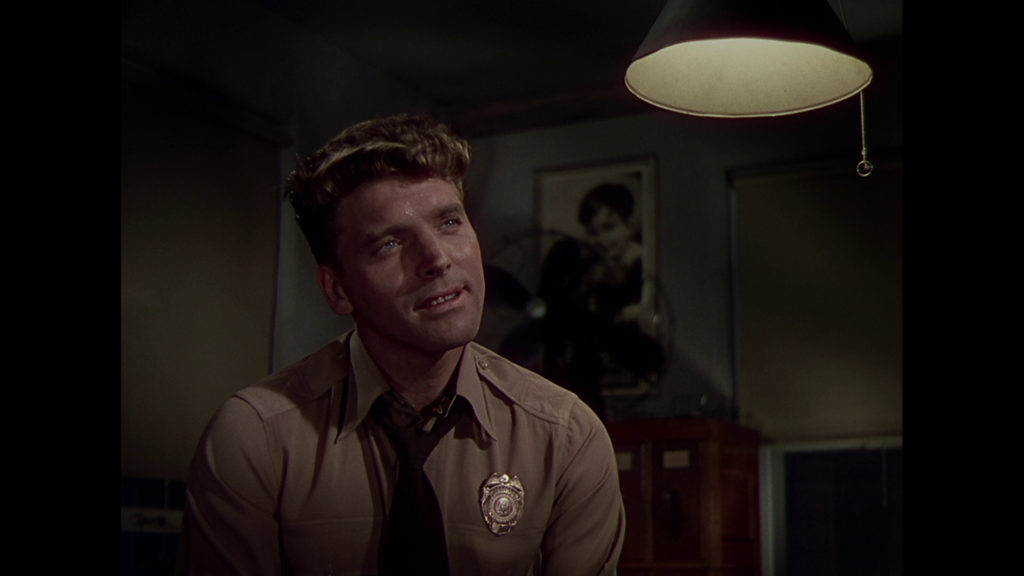
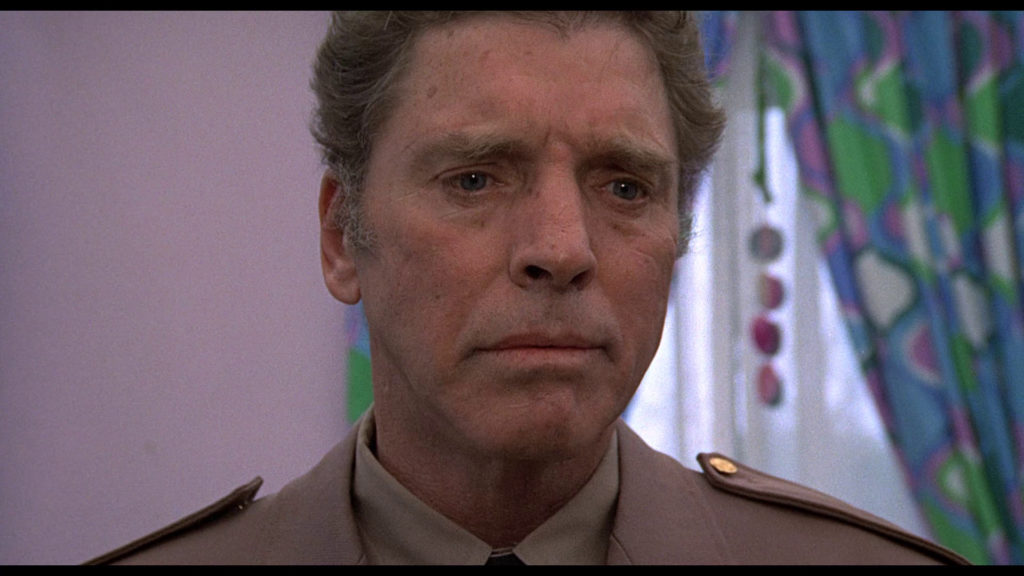
Beyond Burt, a title serving as functionally as epilogue as it might a postscript, Kino Lorber’s Blu-rays of Desert Fury and The Midnight Man first and foremost provide the highest visual and audio presentation of hitherto little-known, underappreciated, and plain overlooked screen properties from a major presence in mid-twentieth century American films; all in firm keeping with the philosophical and commercial directive of the treasure-seeking home video company, uncovering screen gems of all studio classic stripes across seventy years of Hollywood entertainment. Both Blu-rays, beyond the immeasurable good of simple and sympathetically realized availability, gain much added value through commentaries that not only contextualize the films within the life and career of Burt Lancaster but also their important place within Hollywood history.
Imogen Sara Smith’s commentary on Desert Fury teases out the symbolic and structural oddities in terms of both story and form of a Technicolor film delineating psychosexual conflict. It’s a doozy of a film, and interpretation of a film, that from this review’s Burt-centric focus makes the young star’s story-course and patrol car-driving tie-up even more remarkable. Howard S. Berger and Nathaniel Thompson’s co-commentary on The Midnight Man brings the hindsight of life and career perspective to full bear on the second (and final) film Burt Lancaster performed double-duty as director and star on (the first and penultimate being the 20-years-earlier The Kentuckian [1955]), and the knowledge and, again, sympathy Berger and Thompson bring to their analysis may cause auditors to re-think their possible dismissal of the film due to its low (or lacking) reputation. In form-fitting uniforms across 26 years of film history, Burt at the dawn and dusk of his film career remains visually and symbolically upright and snappy.
Images are credited to DVDBeaver and are taken from Kino Lorber’s Blu-rays. Thanks to Kino Lorber for providing Blu-ray review copies.


